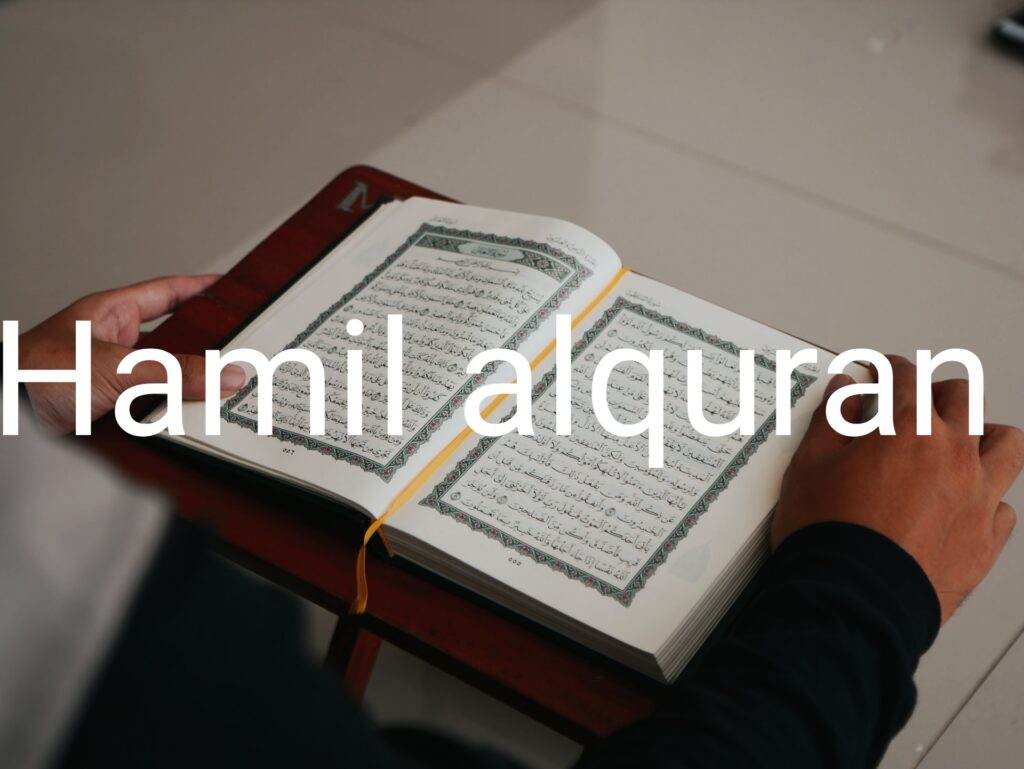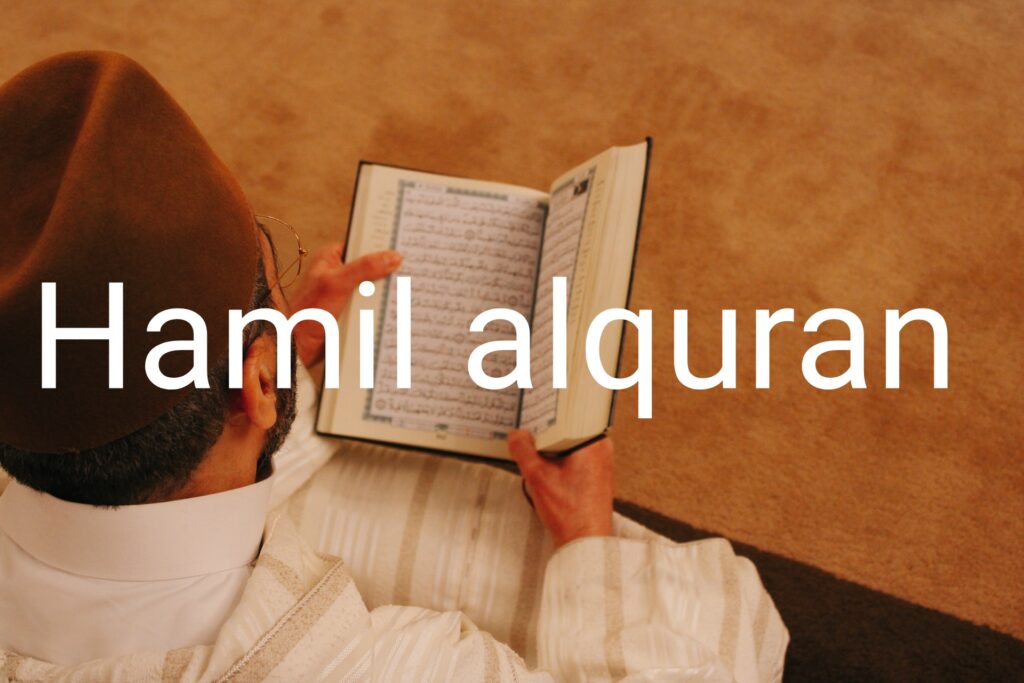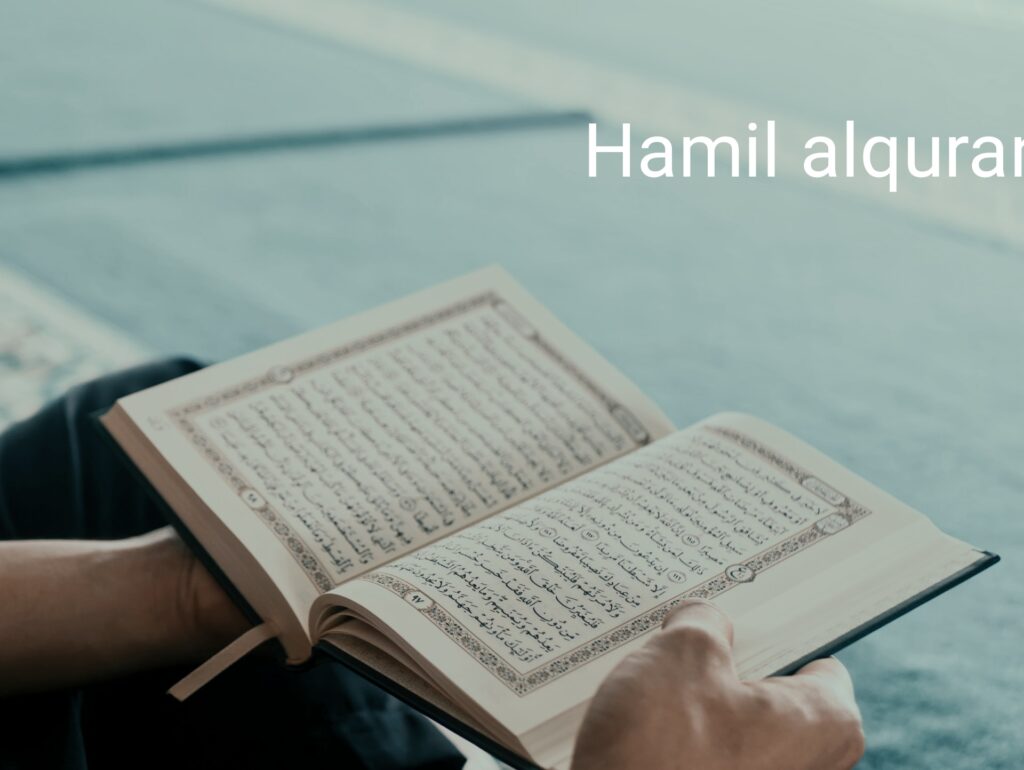The definition of the Quran holy book of Islam is limited to that it is the book that was revealed from Allah Almighty to the Messenger, (PBUH). This book also includes all the provisions that a Muslim needs in his life in detail.
The book of Allah Almighty was called the Qur’an. Because it includes in its folds stories and news, promises and threats, commands, and prohibitions, just as it combines verses and surahs each other.
In the following, we will learn about the chronological history and the extent of the development of the process of collecting and preserving the Quran by the Rightly Guided Caliphs, in addition to that, we will study the characteristics and characteristics of the Quran.

A brief history of the Quran
Table of Contents
ToggleThe Holy Quran includes a great and eventful history, starting from the beginning of the revelation of the Messenger, may Allah’s prayers and peace be upon him, all the way to documenting the Quran and starting to write it down through memorization. Therefore, we will shed light on this specific time period.
Origin and compilation of the Quran
The noble Quran is the holy book and the reference for the nominal religion. It was revealed to the Prophet, may Allah’s prayers and peace be upon him, in about 23 years.
The Messenger also faced the most severe hardship and torment for the spread of the nominal religion and the supremacy of Islam.
After the death of the Messenger, may Allah’s prayers and peace be upon him, the Companions began to compile the Qur’an and write it down in multiple versions, for fear of distortion.
Where the codification process took place by writing it quoting from the memorizers of the Quran among the companions, may Allah be pleased with them, under the supervision of the cell Abu Bakr Al-Siddiq.
Preservation of the Quran
The preservation of the Quran has been a top priority for Muslims since its revelation to the Prophet Muhammad over 1400 years ago.
The Islamic holy book was initially preserved orally, as the Prophet Muhammad and his companions memorized and recited the verses of the Quran.

During the Prophet’s lifetime, many of his companions memorized the entire Quran and passed it down to their students.
The oral transmission of the Quran was considered the most reliable means of preserving the text, and it is estimated that by the end of the Prophet’s life, thousands of people had memorized the entire Quran.
After the death of the Prophet, the written copies of the Quran were collected and compiled into a single book, as we discussed earlier.
The early Muslim community took great care to ensure the accuracy and consistency of the text, with multiple copies being compared to ensure that there were no errors or discrepancies.
In addition to these measures, Muslims developed a system of recitation and memorization that has been passed down through the centuries.
This system, called tajweed, emphasizes the correct pronunciation and intonation of the Quranic verses, helping to ensure that the text is passed down accurately.
Today, Muslims all over the world continue to memorize and recite the Quran, passing down the text from generation to generation.
The Quran has been translated into numerous languages, making it accessible to millions of people around the world.
Despite the passage of time, the Quran has remained remarkably consistent, with the text being virtually identical to the version compiled during the early Islamic period.
Number of chapters (Surahs) and verses in The Quran
There is a great reward for studying and memorizing the Quran, but before studying it, the student should study many details of the Quran, such as the number of chapters and the number of parts, in addition to knowing the Meccan and Medinan parts of the Qur’an and the differences between them.
How many chapters are in the Quran?
There are 114 chapters (Surahs) in the Quran the holy book of Islam, each called a surah. The surahs are arranged in a specific order, beginning with the longest chapter (Surah al-Baqarah) and ending with the shortest chapter (Surah al-Kawthar).
Each surah of the Quran has its own unique style, themes, and message. Some surahs focus on the oneness of Allah, while others emphasize moral and ethical behavior, stories of the prophets, and social and legal issues.
How many verses are in the Quran?
The Quran contains a number of 6236 verses distributed over thirty parts(Juza) of the Qur’an.
The longest and shortest chapters
The chapters of the Noble Quran are long Surahs and other chapters that are short. Below, we will get to know them in detail.
The longest surah in Quran
The longest chapter in the Quran is Surah al-Baqarah, which has 286 verses. It is a Medinan chapter and covers a wide range of topics, including the story of Adam and Eve, the Ten Commandments, and the story of the Golden Calf.

Surah al-Baqarah is considered one of the most important chapters of the Quran and is often recited in its entirety during Islamic rituals such as the night prayer (Qiyam-ul-layl) during Ramadan.
The shortest Surah in Quran
The shortest Surah (chapter) in the Quran is Surah al-Kawthar, which has only three verses. It is a Meccan chapter and focuses on the bounty and blessings that Allah has bestowed upon the Prophet Muhammad.
Despite its brevity, Surah al-Kawthar is highly regarded among Muslims and is often recited during daily prayers.
The Meccan and Medinan chapters
The Holy Quran was not revealed in one sentence, but it was revealed over a period of 23 years in each of Makkah and Madinah, as the suras that were revealed in Makkah are called Makkah suras, while the suras that were revealed in Medina are called Medinan suras.
The surahs of the Islamic holy book are divided into two parts: Makkah surahs and Madinan surahs, as the Meccan surahs are the ones that were revealed to the Messenger, may Allah bless him and grant him peace, in Makkah Al-Mukarramah.
In contrast to the Madani suras, which were revealed to the Messenger, may Allah bless him and grant him peace, after the migration to the Madinah, and the Qur’anic text changed in these suras, except that it touched on the practical side of life, such as the way to deal with non-Muslims.
How can you tell the difference between a Meccan and Medinan chapter?
There are several ways to distinguish between Meccan and Medinan chapters:
1- Historical context:
Meccan chapters typically focus on the oneness of Allah, the Day of Judgment, and the moral and ethical behavior of individuals.
They also contain stories of the prophets and their struggles with their communities.
Medinan chapters, on the other hand, deal with social and legal issues, including governance, warfare, and the establishment of a community of believers.

2- Style and language:
Meccan chapters are generally shorter and more poetic, with a strong emphasis on rhyme and rhythm.
They also tend to use simpler language and focus on conveying the core message of Islam.
Medinan chapters are longer and more detailed, with a more complex and varied style that reflects the diversity of the issues addressed.
3- Chronological order:
The arrangement of the Quran follows a chronological order, with the Meccan chapters being placed first, followed by the Medinan chapters.
This means that the early chapters of the Quran are generally Meccan, while the later chapters are predominantly Medinan.
4- Content:
Meccan chapters often have a more spiritual and contemplative tone, encouraging the reader to reflect on the majesty of Allah and the beauty of creation.
Medinan chapters, by contrast, tend to be more practical and address issues related to the organization and governance of the Muslim community.
The rhyme scheme of the Quran
The Quran is characterized by the consistency of the syllable and the meanings of each of the verses, so it has been made a reference for students of the Arabic language.
The holy book of Islam is written in rhymed prose, which means that each verse is composed of a series of short phrases or sentences that rhyme with each other.
The rhyming words occur at the end of each phrase or sentence and create a pattern that is repeated throughout the verse.
The rhyme scheme of the Quran is based on a system of letters, known as the “rhyme letters” (al-maqātil), which are used to indicate the end of each phrase or sentence.
The Quranic text contains 14 different rhyme letters, which are arranged in a specific pattern in each verse.
The pattern of the rhyme scheme varies from verse to verse, with some verses having a simple pattern of two or three rhyming words, while others have a more complex pattern with multiple rhyming words.
The use of rhymed prose in the Quran is one of its most distinctive features and adds to the beauty and musicality of the text.

The rhyme scheme is also an important aid to memorization and recitation, as it helps to reinforce the structure and flow of the verses.
The topics Quran covered
The Islamic holy book is characterized by comprehensiveness, as it deals with all aspects of faith, monotheism, methods of dealing, achieving justice and equality, as well as the pillars of Islam, throughout 114 surahs.
The Noble Quran contains 114 surahs, as these surahs contain all aspects that concern the Muslim and his life, such as etiquette, principles of faith, belief in Allah, and affirmation of torment and recompense in the afterlife.
Among the topics dealt with in the Qur’an in various surahs are the following:
- The principles of monotheism and belief, which is represented in the belief in the unity of Allah Almighty and that Allah has no partner.
- The Holy Quran dealt with many stories of faith in detail.
- The Qur’an also explained torment and punishment, heaven and hell.
- Then he touched on explaining the pillars of Islam, such as prayer, zakat, and fasting, and explained the provisions of each pillar in detail.
In addition to these topics, the Quran also contains numerous parables, allegories, and metaphors that illustrate its teachings and provide deeper insights into the human condition. It encourages reflection and contemplation on the meaning of life and the purpose of existence.
Quran’s style and language
The language of the Quran was distinguished as a standard Classical Arabic that contains strong words, which made the Holy Quran a source of knowledge for scholars and students of the Arabic language.
The Quran is written in Arabic and is considered one of the most beautiful works of literature in the Arabic language. It is written in a unique and highly refined style that is distinct from other forms of Arabic literature.
The language of the Quran is classical Arabic, which was the language of the Arabian Peninsula during the time of the Prophet Muhammad.
As classical Arabic is a highly structured and complex language, known for its precision and clarity.

The style of the Quran is characterized by its use of rhymed prose, with each verse consisting of a series of short phrases or sentences that are often linked by a common theme or idea.
The use of rhymed prose gives the Quran a distinctive musical quality and makes it easy to memorize and recite. need to learn Quran recitation and memorization?
check Hifz Quran memorization classes and Quran recitation course.
The Quran also makes use of various literary devices, such as metaphors, similes, and rhetorical questions, to convey its message.
It uses vivid and powerful imagery to describe the beauty of Allah’s creation and to emphasize the importance of moral and ethical behavior.
In addition to its literary qualities, the language of the Quran is considered to be the standard of the Arabic language and has had a profound influence on the development of the language over the centuries.
The Arabic language is known as the language of the Quran, and the study of Arabic has been a key component of Islamic scholarship throughout history.
The historical context
The history of the revelation of the Quran is full of conflicts and conflicts that the Messenger, may Allah bless him and grant him peace, faced in order to spread this religion, and between rejection and acceptance, emigration and wars unless the Islamic religion was consolidated.
The Holy Quran was revealed to Al-Nabi Muhammad the prophet, may Allah’s prayers and peace be upon him, for exactly 23 years, as the revelation began in the year 610 CE, and here was the beginning of the historical conflict between the people of Makan and the Prophet, may Allah’s prayers and peace be upon him.
Where the Prophet, PBUH, was born and raised in the desert of Mecca, which was the source of his prophecy.
And since his upbringing there, infidelity, drinking alcohol, and Islamic worship prevailed in this town, until the revelation descended upon the Prophet, and here was the beginning of the conflict.
Where there were many conflicts that fought the Islamic religion, and this religion was in its infancy an undesirable religion.
But the people of Mecca saw that their religion and identity were taken away from them until many conflicts broke out against the Prophet, may Allah bless him and grant him peace, and his call was rejected.
The Quran did not stop descending on the Messenger throughout the period of these conflicts, and despite the disputes that arose, all the verses that were revealed in Mecca call for the name and revolve around one idea, which is the oneness of Allah Almighty and that Allah Almighty has no partner.
After many disputes that arose against the Messenger and his followers, the Messenger, may Allah’s prayers and peace be upon him, immigrated in the year 622 CE to al-Madinah.
And from here began a new era for the revelation of the Qur’an, as the Qur’anic verses were concerned with clarifying ways to deal with non-Muslims.
The theological significance of the Quran
The holy book of Islam included many aspects of monotheism and belief, such as affirming the attributes of Allah Almighty, talking about this world and the hereafter, and the principles of belief.
One of the principles of faith that the Quran also spoke about is the abode of the Hereafter, as it was mentioned in the Quran many verses that explain and talk about the Hereafter.
With something of intimidation to the disobedient and encouragement to do righteous deeds for the believers, as well as the talk about Heaven and Hell, although the talk about Heaven was not detailed.
The Quran also dealt with the talk of angels, elves, prophecy, and the difference between the Prophet and the Messenger, since a large number of prophets and their stories were counted.
Quran also contains teachings on various other theological topics, such as the nature of prophethood, the role of angels and jinn, the importance of prayer and fasting, and the significance of the Quran itself as a source of divine guidance.
These teachings provide Muslims with a comprehensive theological framework that informs their beliefs, practices, and worldview.
You may like to check our Islamic studies courses free trial class
The Impact on Islamic Thought and Culture
The Islamic holy book took care of all aspects that concern the Muslim’s life and the laws of the Islamic religion, which left a great impact and a strong scientific approach from which the Muslim draws on the sciences of his religion. Below we will learn about the impact of the Quran on Islamic thought and culture.
The impact of the Noble Quran on Islamic thought and culture is immense and far-reaching, shaping everything from religious beliefs and practices to social customs and political systems.
One of the most significant impacts of the Quran on Islamic thought is its influence on the development of Islamic theology.
The Quranic teachings form the basis of Islamic theology, and its verses have been interpreted and analyzed by Muslim scholars for centuries.
This has led to the development of numerous schools of Islamic theology, each with its own distinctive interpretations of the Quranic text.
The Quran has also had a profound impact on Islamic law, known as Shariah. As many of the rules and regulations in Shariah are derived directly from the Quran.
And its verses have been used to establish legal principles governing everything from family law and inheritance to criminal justice.
In addition to its impact on Islamic theology and law, the Quran has also influenced Islamic culture in numerous ways.
Its teachings on morality, ethics, and spirituality have helped shape Islamic art, literature, and music, and its verses are often recited during religious ceremonies and rituals.
Moreover, the Quran has played a crucial role in the development of the Arabic language, as it is written in a highly sophisticated form of Arabic known as Classical Arabic.
This has led to the widespread use of Arabic as the language of religious scholarship and education throughout the Islamic world.
Conclusion
The holy book of Islam is considered the reference and constitution of the Islamic religion for Sharia, as it contains all the provisions and laws that govern Islam.
It is worth noting that the Noble Quran was revealed to the Messenger, may Allah’s prayers and peace be upon him, over the course of 23 years between Mecca and Medina, and therefore the suras of the Quran are classified into Mecca and Medina.
In addition to that, the language of the Holy Quran is characterized by eloquence in its rhetoric and eloquence in style, which makes it unique from other books written by humans.
Hamil Alquran Academy offers you learn Quran online course free trials. join us now!
